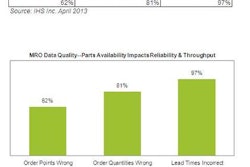"Words are magic. The very idea that by making sound we can paint pictures in the minds and hearts of others is magic. We get to choose the type of Magic we practice." - Jack Brightnose Sr., Cree Medicine Man
What we think will determine what we say, what we say determines what we do. What we do creates reality.
When I ask CEOs, business owners, and business managers what comes to mind when they think about Credit and Accounts Receivable Management, I hear things like: “a cost center,” “a necessary evil,” “the sales avoidance department,” and “the place where sales go to die.” As one CEO put it: “the ugly stepchild of accounting.”
How important is Credit anyway?
- Ninety-five percent or more of B2B or commercial sales involve payment at some later date . . . credit terms are extended.
- The resulting accounts receivable (A/R) is the greatest source of working capital and is also the source of the most profitable sales yet to happen: additional or repeat sales to existing customers. Keep in mind that 65 to 80% of revenue comes from existing customers.
- And because of the interface that Credit and A/R Management has with just about every aspect of a business, it can also be a source of identifying inefficiencies throughout the entire supply/production chain.
So we are talking about a business function directly involved with both new sales, ongoing sales, and with the life blood of a business: cash flow.
And yet, what do we expect from this obviously important business function?
Well, expectations come from what we understand, and that in turn leads to what we do, how we do it, and what performance we measure. Credit and A/R Management may be the most misunderstood and underutilized area of a business – and it’s a profit center just waiting to happen.
A CEO Conversation
Recently I had a three hour conversation with a Vistage CEO Group on Profit Centered Credit and A/R Management. No sexy spreadsheets or formulae – just proven methods for turning a perceived cost center into a profit center.
I have now had this “conversation” with over 300 Vistage groups in the US, Canada, Europe, and Australia, and the one thing that is for sure: if these CEOs think what is being said is without value, they are not shy about letting you know.
The Starting Point
For the brain to get its “arms” around a concept no matter how simple or complex, there has to be a starting point.
In this conversation, the starting point was the Profit Imperative: how in a for-profit and competitive business every area of a business and every business manager has an obligation to ensure that the investment made and costs incurred result in a positive return – more money in than money out.
We talked about how the Credit Function and A/R area can best contribute to driving revenue up and the costs down.
I started the conversation by asking this group of CEOs and their guests how they measured performance. What is watched gets done. How did they know the Credit and A/R area was doing a good job?
DSO (days sales out) and bad debt are almost always the standard answer across industry lines and so it was with this group.
How about your company?
We then talked about who the Credit and A/R guys report to, and almost without exception they answered that it was Accounting/Finance.
Who does your Credit Department call “boss”?
What, How, Why
Everyone can tell you what they do, most can tell you how they do it, but what is really important is the why . . . and many – if not most – are wrong about the “why.”
Why do companies make the investment or incur the costs that go with extending credit terms to customers?
Let’s start with the investment/costs. It starts when a new customer says yes they want to buy. If it hasn’t already been discussed, the salesperson asks how the customer would like to pay.
“I need 60 day terms,” says the customer.
We are now into the first cost associated with Credit ... the additional administrative costs: information gathering, customer evaluation and investigation, factoring in the Seller’s Product value at Time of Sale, terms and conditions of sale, account establishment, billing, and past due A/R management.
The next cost that goes with selling based on payment at a later date is the time value of money as we convert stuff or time into A/R (short term money due from customers).
The last cost, should the customer fail to pay, is bad debt.
Keep in mind that the costs that go with extending credit to customers are variable costs and not fixed costs.
So why do companies make the investment or incur the costs that go with extending credit terms?
This group, like many before it came up with the following:
- Required. Customers require that the Product or Service (P/S) be provided and that they be given time to ensure they got what they wanted and they require time to process the billing for payment.
- Down-line. Customers need time to add value to the P/S purchased and to make sales to their own down-line customers before they can pay.
- Customary. Credit terms are the accepted way of doing business in the industry, or the seller has competitors who extend credit terms.
So why do companies make the investment or incur the costs that go with extending credit terms?
In order to get Profitable Sales that would otherwise be lost.
Credit is a lubricant of commerce and allows for the expanded movement of P/S. Credit and AR management are a sales support function - not an accounting function. Using the “risk” focused measurements of DSO and bad debt will adversely affect profitability.
Once the CEOs and I had all agreed that credit is not extended so as to make work for the accounting or finance people, we moved on to the major components that make up the Credit Sales and A/R Management function in order to establishing a goal or goals for each of the major components that would support the “Why.”
Major Credit Sales Components & Goals
The four major components of Credit Sales and A/R Management are, in order of priority and sequence of events:
- Credit Sales Approval
- Billing
- Past Due A/R Management (this is not collections)
- Internal Communications (monitoring, measurements , identifying areas of opportunity for improvement)
Credit Sales Approval is the highest priority because that New Customer Information form (not credit app) represents why any company is in business . . . a customer waiting to buy – it’s a profitable sale waiting to happen.
Back when I sat behind the credit desk at a distribution and service company, I’d tell the sales guys to get me the customer information I needed, much of which they already knew, and that in one hour I’d find a way to make a profitable deal/sale happen. Every sale must have a potential for profit whether that profit is short term or long term. Anyone can make a sale and lose money.
The job of Credit Sales Approval is to weigh the Customer Profile (Who & How), the Customer’s Past Performance, and the Seller’s Product Value at Time of Sale, and then find a way via Terms and Conditions of Sale (T&Cs) to say yes. The goal is to make profitable sales happen . . . and if Sales and Credit work together, more than 100% of “applied for dollars” can be approved. Think in terms of Credit Lines and not Sales Limits.
Billing must follow Credit Sales. Don’t send an invoice and the customers won’t send money.
While billing would seem to be clear cut it’s not.
I was doing an in-house training program for a computer reseller when this young salesperson, who had been introduced as the third highest salesman for the quarter, raised his hand and said that he personally checked every invoice going to his customers before they were sent. He wanted them to be right and on time. The woman in charge of the Billing spoke up about how sometimes sales sent in orders to be billed and how the department couldn’t figure out what was sold and how much they should bill, so they delayed billing the customer until they received answers to their questions.
The job of Billing is to get invoices out in a timely, accurate, complete, and understandable manner. The goal of Billing is to facilitate payment and in order to do so requires that all the different business functions work together.
Past due A/R Management is the next major component and it is not “collections”.
A study of over 8,000 companies across industry lines found that on average, 25% of A/R is past due at any given time (1 day plus beyond terms). The same study also found that on average, less than 1% of A/R is ever written off as a bad debt loss.
The vast majority of past due customers are not trying to avoid payment. In fact, if any kind of due diligence was followed in Credit Approval, customers trying to avoid payment make up the smallest percentage. I owned a collection agency prior to entering the commercial credit management field and “collections” is the enforcement of payment; it is a relationship between creditor and debtor and the debtor is the beholding party. In business we are not dealing with “debtors,” but with customers – and the seller is the beholding party.
Past Due A/R Management is the Completion of The Sale and the goals are:
- To keep customers paying (even if not current) and buying.
- The early identification and control of the very small number of customers at risk of being a loss.
- The uncovering of inefficiencies (process and people) that drive up costs.
The last major component is internal communications: the monitoring of key performance indicators based on the goals, and the identification and elimination of inefficiencies. Over the long term identifying areas of opportunity for improvement contribute more to profitability than do more and larger new and repeats sales, good cash flow, and controlled bad debt... combined.
Thoughts lead to words, which lead to actions, which create reality: new knowledge applied can turn a cost center into a profit center.
Abe WalkingBear Sanchez is the developer of the copyrighted Profit System of B2B Credit Sales Management. An international speaker and trainer, he is the endorsed consultant for PEI and STAFDA. You can learn about his business – A/R Management Group – by visiting www.armg-usa.com. You can reach him at [email protected], or by phone at 719-276-0595.






















